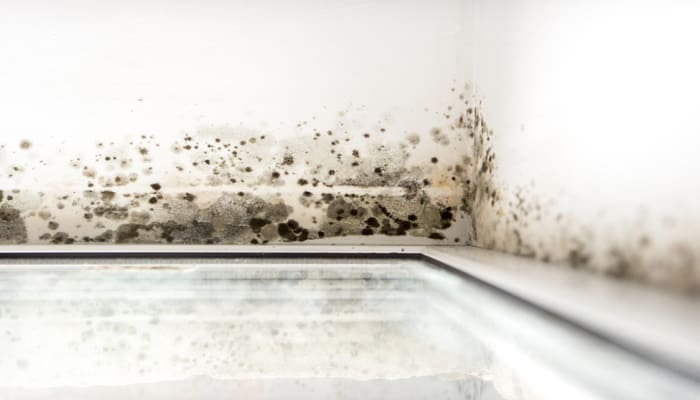Do you uncover white patches that are fuzzy-like on your basement floor? Do you regularly find slimy dark spots on your shower curtain or window blinds? Or do you constantly see a form of orange films on your drains?
These are signs of mold problems in your home. House molds are really difficult to look at. They can make you sick. This is especially so for those who are asthmatic or have certain allergies. Regardless of whether you are allergic to this infestation or not, the sight of one can infect your eyes, nose, skin, and lungs.
This piece talks more about problems caused by molds and how to tackle them. However, before we indulge, let’s quickly take a look at what it is.
What are Molds?
Well, for those who don’t know, molds are simply microorganisms. They can be seen in all areas. They can grow on anything as long as it is moist enough.
However, inside the home, they tend to grow rapidly on damp surfaces. These surfaces can include trims close to windows, and bathroom walls. You can tell a mold once you see a black stain or furry growth. You can also notice them in specks of colors ranging from black, white, green, brown, or orange.
Mold, once it grows, can expose fumes in the air. So, once a person gets close to the surrounding, he/ she gets exposed to infections and allergies. Those with breathing challenges will suddenly develop asthma.
To do away with these health complications, keeping the home mold-free is highly essential. You can check here for how to get the best mold testing in California remediation for a permanent solution.
How Do They Enter Your Home?

As long as you live in a home, there is a high probability that you have molds living with you. How so? well, it is simply because humans occupy a home, and humans to survive must breathe. Did you know that when we breathe, we release lots of moisture into our surroundings? Also, cooking with leaky pots, taking warm long showers, and drying clothes indoors, contribute to moisture in the home.
The moisture that we release causes mold to grow in our homes. In short, our daily routine can cause mold buildup in our homes.
How to Tell You Have Mold Problems in Your Home
As aforementioned, the moisture that we expose in the home causes mold growth. so, check for the following signs:
Roof or plumbing leaks: Yes, you can discover fuzzy white patches when water leaks into your carpets or inside the walls. So, when your rugs have a musty smell or a colorful stain, it is a sign of mold.
Colorful patches around the floors of your basement: This is especially so when water enters your basement. Moisture can still pass through the concrete foundation of your home during the rainy season. This exposed moisture will cause a musty smell or a colorful stain on the bottom carpets or walls of your home.
Windows and doors: During times of winter, the air is moist. The moist air will in turn change to water. And, once it enters the cooler surface of your windows or doors, mold will inevitably grow there.
Fuzzy white patches on ceilings, walls, floors, carpets, and shelves: Youmust take the time and observe these areas. Smell them as well. A musty smell can sometimes be the only clue you need. This website link https://www.familyhandyman.com/list/how-to-test-for-mold/ has more on how to test for mold.
How to Tackle it

Below are excellent tips to tackle the fuzzy white patch in areas of your home
Use Protective Gears
When maneuvering mold infestation, best use protective gears. The following apparatus can help reduce your exposure to this infestation:
- Eye goggles
- Rubber gloves
- Easily discarded clothing from the work area.
- N-95 respirator. This gear can be found at your local hardware stores.
Properly Clean Surfaces
Properly clean all surfaces that are infested. A stiff brush and a detergent or soap in hot water will be preferable for such cleaning. Keep in mind that your detergent shouldn’t contain ammonia. Make sure used liquid is collected. Use a mop, sponge, or vacuum. Rinse the area you’ve worked on properly with water, and thoroughly dry.
Disinfect Surfaces
Once you’re done with the cleaning, the next thing is to disinfect the affected surfaces to get them away from your living area. Wipe the area again. When doing so, use bleach and water.
Keep the following in mind:
- If the area affected is small, make use of 5 cups of water. Mix the water with ½ cup of bleach.
- If the affected area is large, mix ½ gallon of bleach into a 5gallon pail of water.
- Do not use the bleach excessively. Make sure to follow the direction and warnings on the label.
- Ammonia and bleach shouldn’t be mixed. This is because it can produce toxic fumes. This can be dangerous to health.
- When using bleach, make sure to open all windows. This is so that you can breathe in the clean and fresh air.
Allow the Surface to Air Dry

Make sure to allow the surface to dry out. Ideally, you’ll want to ensure the surface air dries. This is to maximize the bleach contact with the affected area.
Do Away with Things that Cannot Be Cleaned
Ideally, you’ll want to throw away things that cannot be cleaned. Mattresses and carpets are usually areas to find rot. And, these are things that when infested, cannot be cleaned. So, in such a case, you’ll want to throw them out.
Wash and Dry Fabric Items Properly
By simply washing and drying drapes, curtains, bedding, and clothes, you can rid out molds.
Take Away
Mold isn’t always easy to deal with. Sometimes, it can even be difficult to identify. Finding how to deal with mold problems in your home is all about understanding all there is to know about the infestation.
If you find it difficult to prevent, then it is best to hire the service of a company. Nevertheless, make sure to research before making any rash decision. This is because not all companies can provide quality service.

